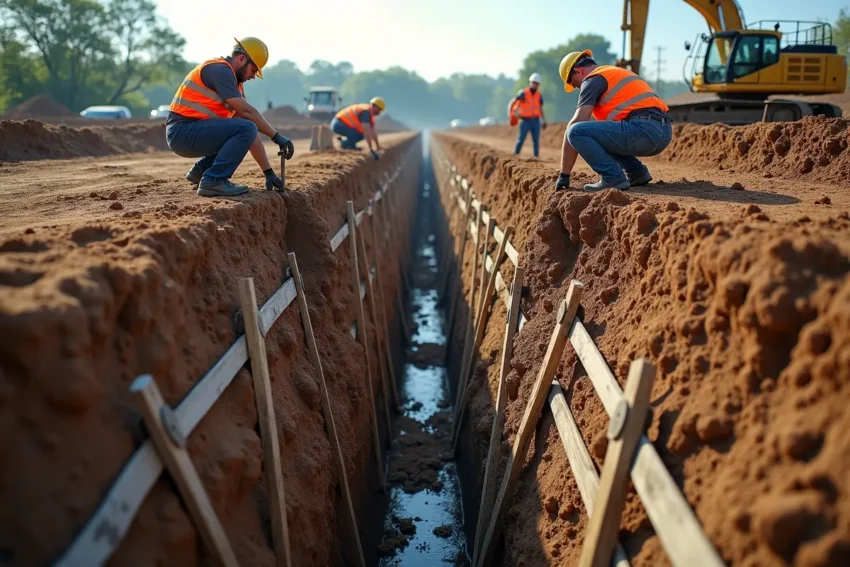In construction, where precision and safety are non-negotiable, protecting workers from trench collapses and cave-ins is both a legal responsibility and a moral duty. Trenches are inherently risky, and understanding those risks is key to preventing accidents. Whether you’re simply reinforcing best practices or seeking guidance after an incident, this article from the best construction injury attorneys in Buffalo outlines essential strategies for keeping crews safe and compliant with regulatory standards.
Why Trench Collapses Happen
Soil Conditions
Unstable soil is one of the leading causes of trench failure. Loose sand, silt, or soil saturated with water quickly loses strength, creating a high risk of collapse.
Lack of Proper Support
Trench boxes and shoring systems are designed to stabilize walls, but when they’re installed incorrectly—or not used at all—the risk of disaster increases dramatically.
Environmental Factors
Heavy rain, nearby machinery, and ground vibrations can all destabilize trench walls. Recognizing these influences allows teams to plan ahead and prevent avoidable hazards.
OSHA Standards for Trench Safety
The Occupational Safety and Health Administration (OSHA) sets clear rules for trenching work. Any trench deeper than five feet must have a protective system in place. OSHA recognizes three main options:
- Sloping – cutting trench walls back at a safe angle.
- Shoring – using supports to hold soil in place.
- Shielding – installing trench boxes that safeguard workers inside the excavation.
Equally important is ensuring that a trained, competent person supervises operations and that all workers receive proper safety training.
Essential Safety Equipment
Personal Protective Gear
Hard hats, steel-toed boots, and high-visibility clothing are basic necessities. They protect against falling objects, sharp debris, and low-light hazards.
Protective Systems
Trench shields and hydraulic shoring systems provide the structural reinforcement needed to prevent collapses.
Monitoring Devices
Technology like inclinometers, lasers, and ground sensors can track soil shifts in real time, offering critical early warnings before a collapse occurs.
Best Practices
Trenches should be inspected daily, as well as after rainstorms, heavy equipment use, or any event that could compromise stability. Inspections must be handled by someone qualified to spot warning signs such as cracks, water seepage, or soil movement.
Complementing these checks with monitoring equipment creates a proactive safety net. Real-time data allows supervisors to address risks before they become emergencies.
What to Do if a Trench Collapses
Immediate Response
Call emergency services right away and clear the area of all personnel to prevent further injuries.
On-Site Aid
If it’s safe, provide basic first aid to accessible victims, focusing on airway, breathing, and circulation, but never enter the trench yourself.
Coordination with Rescuers
When emergency teams arrive, provide detailed information about the site layout, number of workers involved, and any hazards they should be aware of.
Final
Trench safety comes down to vigilance, preparation, and a culture that prioritizes worker protection, says the best construction injury attorneys in Buffalo. By following OSHA standards, maintaining equipment, and fostering open communication on job sites, contractors can significantly reduce risks.
For those seeking legal guidance after a construction-related injury, consulting with experienced attorneys ensures both accountability and fair support for workers and their families.

